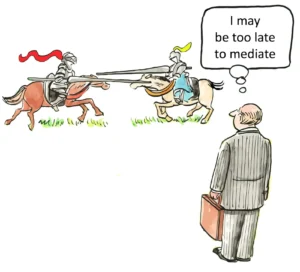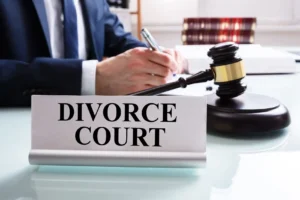How do you prove negligence in a medical malpractice case?
Proving negligence in a medical malpractice case requires a thorough understanding of both medical and legal principles. The process involves demonstrating that a healthcare provider’s actions or omissions fell below the accepted standard of care, resulting in harm to the patient. This article will explore the key elements necessary to establish negligence in a medical malpractice claim and provide insights into the legal strategies employed to build a compelling case.
The foundation of any medical malpractice claim rests on four essential elements: duty of care, breach of duty, causation, and damages. Each of these components must be proven to successfully demonstrate negligence on the part of a healthcare provider. Let us examine these elements in detail and discuss the methods used to establish them in a court of law.
Duty of Care
The first step in proving negligence in a medical malpractice case is establishing that a duty of care existed between the healthcare provider and the patient. This duty arises when a professional relationship is formed, typically when a patient seeks medical treatment or advice from a healthcare provider. In most cases, proving the existence of a duty of care is relatively straightforward, as it can be demonstrated through medical records, appointment schedules, or other documentation showing that the patient was under the care of the provider in question.
However, there may be instances where the existence of a duty of care is less clear-cut. For example, in cases involving emergency medical treatment or informal medical advice given outside a clinical setting, the establishment of a duty of care may require more extensive legal argumentation. It is important to note that the duty of care extends beyond physicians to encompass a wide range of healthcare professionals, including nurses, therapists, pharmacists, and other specialists involved in a patient’s care.
To prove the existence of a duty of care, plaintiffs may need to provide evidence such as:
- Medical records showing the patient’s visits or treatments
- Correspondence between the patient and healthcare provider
- Witness testimony confirming the professional relationship
- Billing records or insurance claims related to the medical care
Once the duty of care has been established, the next step is to demonstrate that this duty was breached by the healthcare provider.
Breach of Duty
Proving a breach of duty in a medical malpractice case involves demonstrating that the healthcare provider’s actions or omissions fell below the accepted standard of care in their field. The standard of care is generally defined as the level and type of care that a reasonably competent and skilled healthcare professional, with a similar background and in the same medical community, would have provided under the circumstances that led to the alleged malpractice.
Establishing a breach of duty often requires expert testimony from medical professionals who can explain how the defendant’s conduct deviated from the accepted standard of care. These experts must be qualified in the same or similar field as the defendant and should be able to articulate the appropriate standard of care and how it was violated in the specific case.
Examples of breaches of duty in medical malpractice cases may include:
- Misdiagnosis or failure to diagnose a medical condition
- Surgical errors, such as operating on the wrong body part or leaving surgical instruments inside a patient
- Medication errors, including prescribing the wrong medication or incorrect dosage
- Failure to obtain informed consent before performing a medical procedure
- Inadequate follow-up care or premature discharge from a healthcare facility
To prove a breach of duty, plaintiffs may need to present evidence such as:
- Expert witness testimony explaining the standard of care and how it was violated
- Medical records documenting the healthcare provider’s actions or omissions
- Comparative analysis of similar cases and accepted medical practices
- Evidence of the healthcare provider’s training, experience, and qualifications
It is important to note that not all adverse medical outcomes constitute a breach of duty. Medicine is an inherently complex field, and sometimes negative results occur despite a healthcare provider’s best efforts and adherence to the standard of care. The key is to demonstrate that the provider’s actions or omissions were negligent and fell below the accepted standard of practice in their field.
Causation
Once a breach of duty has been established, the next crucial element in proving negligence in a medical malpractice case is causation. This involves demonstrating a direct link between the healthcare provider’s breach of duty and the patient’s injury or harm. Establishing causation can be one of the most challenging aspects of a medical malpractice case, particularly in situations where the patient had pre-existing medical conditions or where multiple factors may have contributed to the injury.
To prove causation, plaintiffs must show that it is more likely than not that the healthcare provider’s negligence directly led to the patient’s injuries. This is often referred to as the “but-for” test, meaning that but for the defendant’s negligence, the injury would not have occurred. In some jurisdictions, a “substantial factor” test may be applied, which requires showing that the defendant’s negligence was a substantial factor in causing the patient’s harm.
Expert witnesses play a crucial role in establishing causation by explaining the medical aspects of the case and how the healthcare provider’s actions or inactions led to the patient’s injuries. These experts may use medical records, scientific studies, and their professional experience to support their opinions on causation.
To prove causation, plaintiffs may need to present evidence such as:
- Expert witness testimony explaining the link between the breach of duty and the patient’s injury
- Medical records documenting the progression of the patient’s condition
- Scientific studies or medical literature supporting the causal relationship
- Evidence ruling out alternative causes of the patient’s injury
It is important to note that in some cases, a healthcare provider’s negligence may have worsened an existing condition or reduced the patient’s chances of recovery, rather than causing a new injury. In such situations, the concept of “loss of chance” may be applied, allowing patients to seek compensation for the reduced probability of a better outcome due to the provider’s negligence.
Damages
The final element in proving negligence in a medical malpractice case is demonstrating that the patient suffered actual damages as a result of the healthcare provider’s breach of duty. Damages in medical malpractice cases can be categorized into two main types: economic and non-economic damages.
Economic damages, also known as special damages, are quantifiable financial losses that the patient has incurred or will incur in the future as a result of the medical malpractice. These may include:
- Medical expenses for additional treatments, surgeries, or rehabilitation
- Lost wages due to time away from work during recovery
- Future medical expenses for ongoing care or treatments
- Loss of earning capacity due to permanent injuries or disabilities
Non-economic damages, also referred to as general damages, are more subjective and difficult to quantify. These damages compensate the patient for intangible losses and may include:
- Pain and suffering caused by the malpractice
- Loss of enjoyment of life due to injuries or disabilities
- Emotional distress or mental anguish
- Loss of consortium for the patient’s spouse or family members
To prove damages, plaintiffs may need to present evidence such as:
- Medical bills and records documenting the cost of additional treatments
- Expert testimony on future medical needs and associated costs
- Employment records showing lost wages and reduced earning capacity
- Testimony from the patient, family members, and friends regarding the impact of the injury on the patient’s life
It is important to note that some jurisdictions have implemented caps or limitations on the amount of non-economic damages that can be awarded in medical malpractice cases. These caps vary by state and may be subject to constitutional challenges.
Legal Strategies for Proving Negligence
Proving negligence in a medical malpractice case requires a comprehensive legal strategy that incorporates various elements of evidence and expert testimony. Some key strategies employed by attorneys in these cases include:
- Thorough investigation: Conducting a detailed investigation of the circumstances surrounding the alleged malpractice, including gathering all relevant medical records, interviewing witnesses, and consulting with medical experts.
- Expert witness selection: Carefully choosing qualified expert witnesses who can effectively explain complex medical concepts to a jury and provide credible testimony on the standard of care, breach of duty, and causation.
- Timeline development: Creating a clear and comprehensive timeline of events leading up to and following the alleged malpractice to demonstrate the sequence of care and identify any deviations from accepted practices.
- Visual aids: Utilizing medical illustrations, animations, or other visual aids to help explain complex medical procedures or injuries to the jury.
- Cross-examination: Developing effective strategies for cross-examining the defendant’s expert witnesses to challenge their credibility or expose weaknesses in their testimony.
- Alternative theories: Exploring alternative theories of liability, such as failure to obtain informed consent or negligent supervision, to strengthen the overall case.
- Damages calculation: Working with economic experts and life care planners to accurately calculate and present the full extent of the patient’s damages, including future medical expenses and lost earning capacity.
Challenges in Proving Medical Malpractice Negligence
While the elements of proving negligence in a medical malpractice case may seem straightforward, there are several challenges that plaintiffs and their attorneys often face:
- Complexity of medical issues: Medical malpractice cases often involve complex medical concepts and procedures that can be difficult for juries to understand. This complexity can make it challenging to clearly demonstrate how a healthcare provider’s actions deviated from the standard of care.
- Causation disputes: Establishing a clear causal link between the healthcare provider’s negligence and the patient’s injury can be particularly challenging, especially in cases involving patients with pre-existing conditions or multiple contributing factors.
- Defendant resources: Healthcare providers and institutions often have significant resources at their disposal, including experienced legal teams and expert witnesses, which can make it difficult for plaintiffs to build a compelling case.
- Jury bias: Some jurors may have preconceived notions about medical malpractice lawsuits or may be hesitant to find against healthcare providers, requiring attorneys to carefully address these biases during jury selection and throughout the trial.
- Statutes of limitations: Medical malpractice claims are subject to strict statutes of limitations, which can vary by state. Failing to file a lawsuit within the prescribed time frame can result in the claim being barred, regardless of its merit.
- Expert witness requirements: Many jurisdictions require plaintiffs to file an affidavit or certificate of merit from a qualified expert attesting to the merit of the claim before the lawsuit can proceed. Finding a qualified expert willing to testify against another healthcare provider can be challenging.
- Caps on damages: Some states have implemented caps on non-economic damages in medical malpractice cases, which can limit the amount of compensation available to plaintiffs, even in cases of severe injury or death.
Recent Trends in Medical Malpractice Litigation
The landscape of medical malpractice litigation is continually evolving, with several recent trends impacting how negligence is proven and cases are litigated:
- Telemedicine and remote care: The COVID-19 pandemic has accelerated the adoption of telemedicine and remote healthcare services. This shift has raised new questions about the standard of care in virtual settings and how negligence can be proven in cases involving remote diagnosis or treatment.
- Electronic health records: The widespread adoption of electronic health records has changed how medical documentation is created, stored, and accessed. This has implications for how evidence is gathered and presented in medical malpractice cases.
- Alternative dispute resolution: There is a growing trend towards using alternative dispute resolution methods, such as mediation and arbitration, to resolve medical malpractice claims. These approaches can offer faster and less costly resolutions compared to traditional litigation.
- Increased focus on systemic issues: There is a growing recognition of the role that systemic issues, such as inadequate staffing or flawed hospital policies, play in medical errors. This has led to an increased focus on institutional liability in addition to individual provider negligence.
- Use of artificial intelligence in healthcare: As artificial intelligence and machine learning technologies are increasingly integrated into healthcare decision-making processes, new questions are arising about liability and the standard of care in cases involving AI-assisted diagnoses or treatment recommendations.
- Changes in expert witness requirements: Some jurisdictions are implementing stricter requirements for expert witnesses in medical malpractice cases, such as requiring them to be actively practicing in the same specialty as the defendant.
- Increased scrutiny of informed consent: There is a growing emphasis on the importance of obtaining proper informed consent from patients, with courts increasingly recognizing a patient’s right to make informed decisions about their medical care.
Conclusion
Proving negligence in a medical malpractice case requires a comprehensive understanding of both medical and legal principles. Successfully demonstrating the four key elements – duty of care, breach of duty, causation, and damages – is essential to building a compelling case. While challenges exist, including the complexity of medical issues and the resources often available to defendants, skilled attorneys can employ various strategies to effectively prove negligence and secure compensation for injured patients.
As the healthcare landscape continues to evolve, with new technologies and treatment modalities emerging, the field of medical malpractice law must adapt to address novel issues and challenges. Staying informed about recent trends and developments in medical malpractice litigation is crucial for both legal professionals and healthcare providers to navigate this complex area of law effectively.
Ultimately, the goal of medical malpractice litigation is to promote patient safety and quality healthcare by holding providers accountable for negligent care while also recognizing the inherent risks and complexities of medical practice. By understanding the key elements required to prove negligence in a medical malpractice case, all stakeholders in the healthcare system can work towards improving patient outcomes and reducing the incidence of preventable medical errors.
Website citations:
- https://www.findlaw.com/injury/medical-malpractice/proving-fault-in-medical-malpractice-cases.html
- https://www.fpelaw.com/library/three-major-points-to-prove-a-medical-malpractice-case.cfm
- https://bencrump.com/faqs/what-are-the-four-elements-of-medical-malpractice/
- https://www.crcgroup.com/Tools-Intel/post/medical-malpractice-claims-trends
- https://www.powerrogers.com/blog/2024/11/how-to-prove-negligence-in-a-medical-malpractice-case-a-step-by-step-winning-strategy/
- https://www.thefloodlawfirm.com/blog/how-do-you-prove-medical-negligence/
- https://www.mceldrewpurtell.com/news/how-to-prove-medical-malpractice
- https://pmc.ncbi.nlm.nih.gov/articles/PMC6531014/
- https://www.justia.com/injury/medical-malpractice/sitemap/
- https://www.peircelaw.com/blog/2024/september/understanding-medical-malpractice-what-constitut/




















